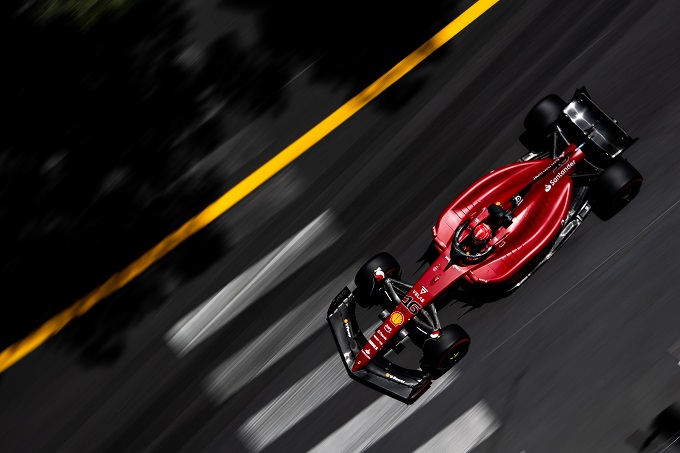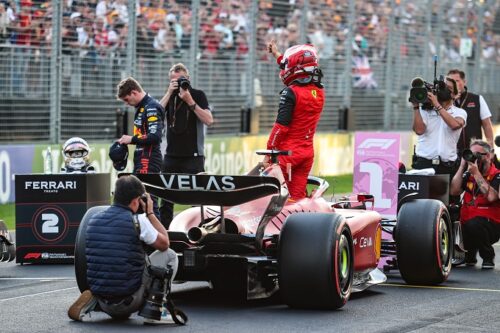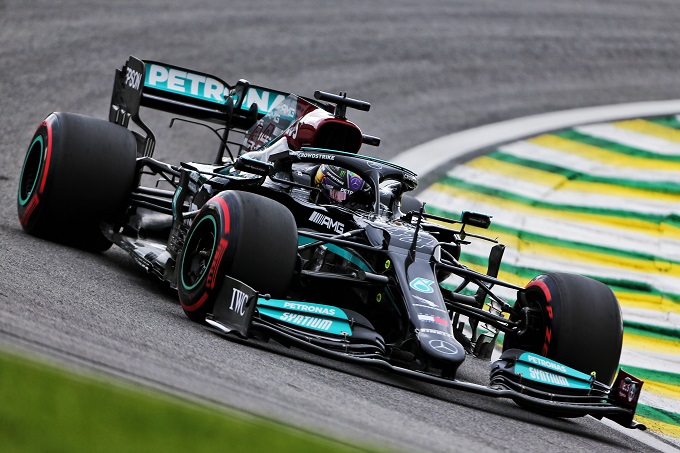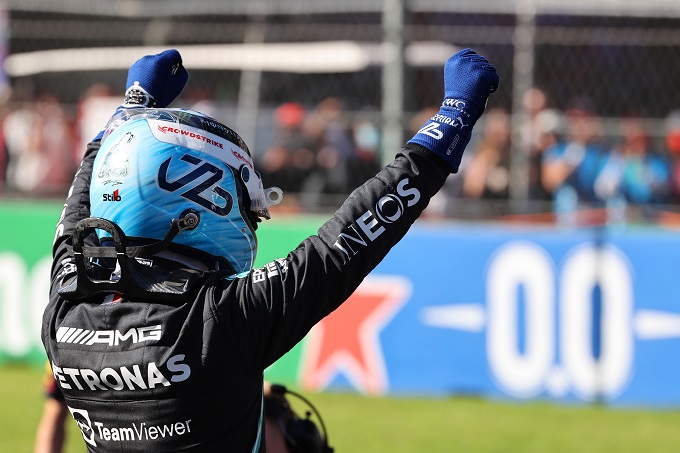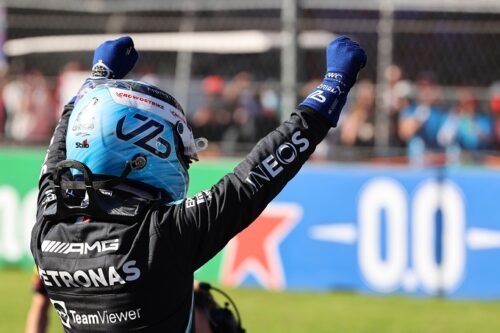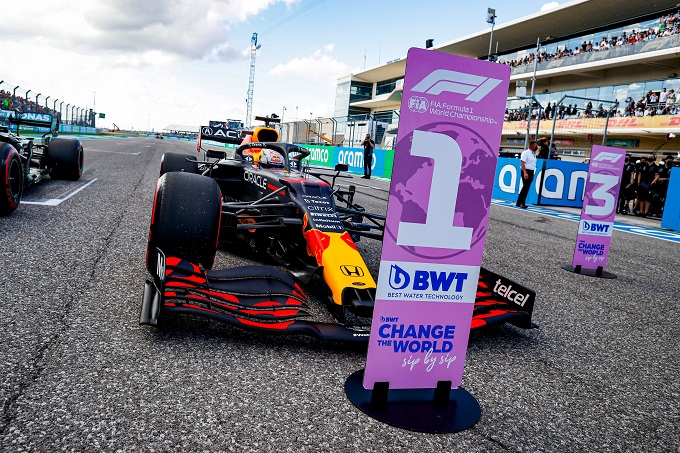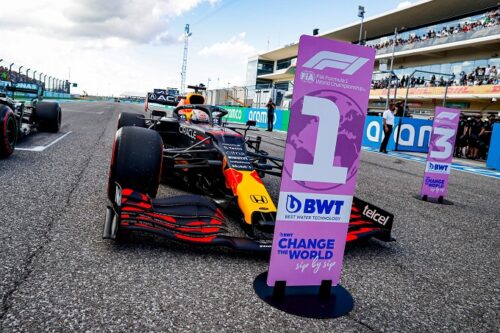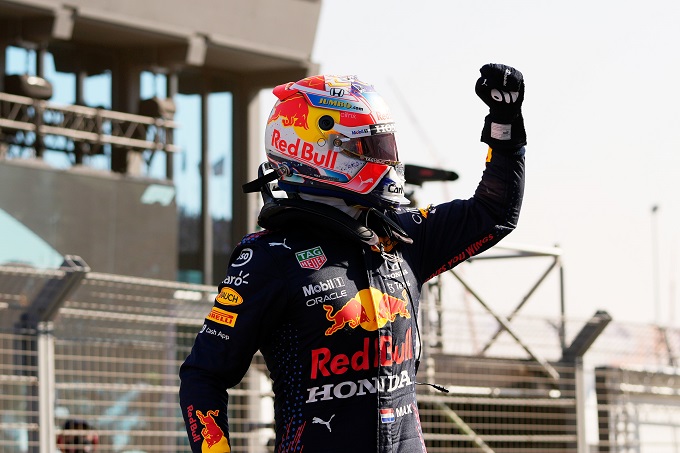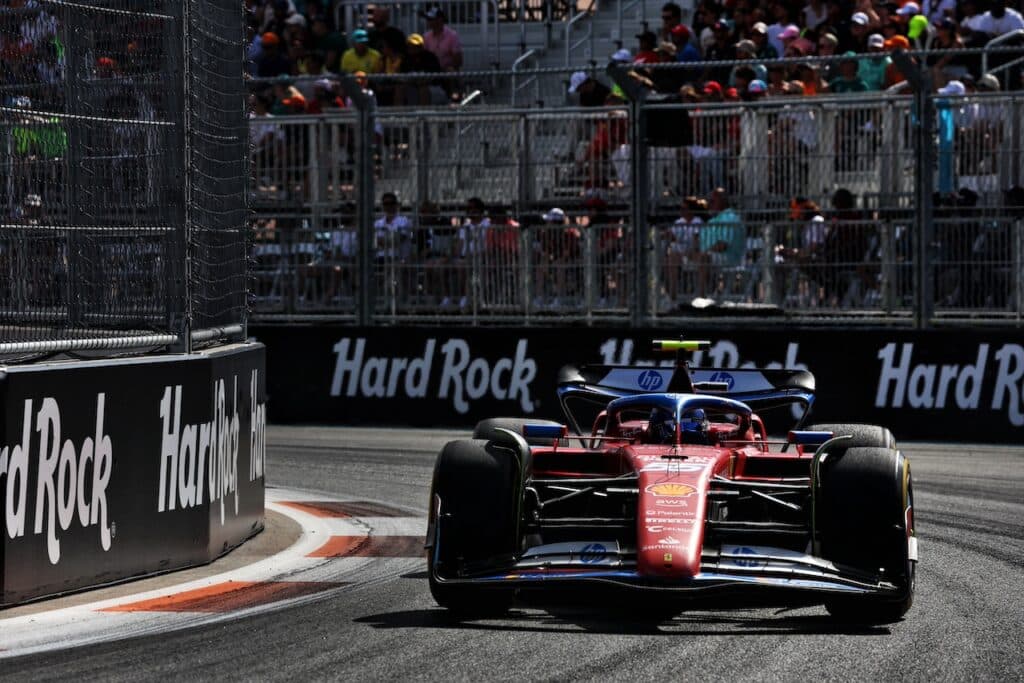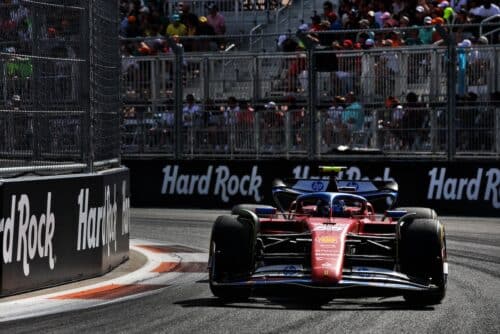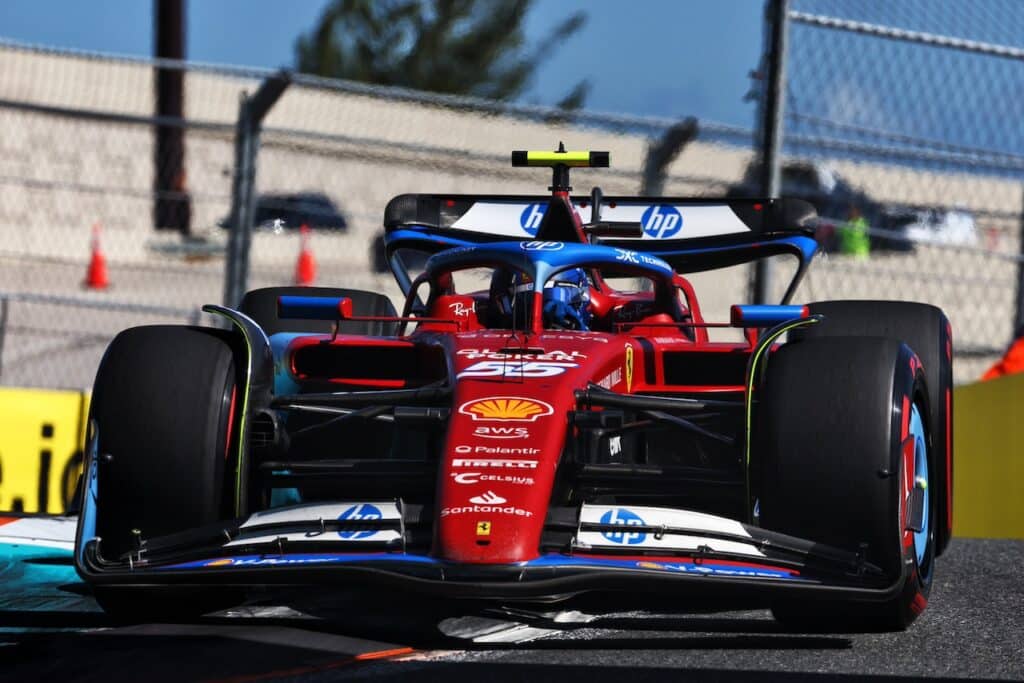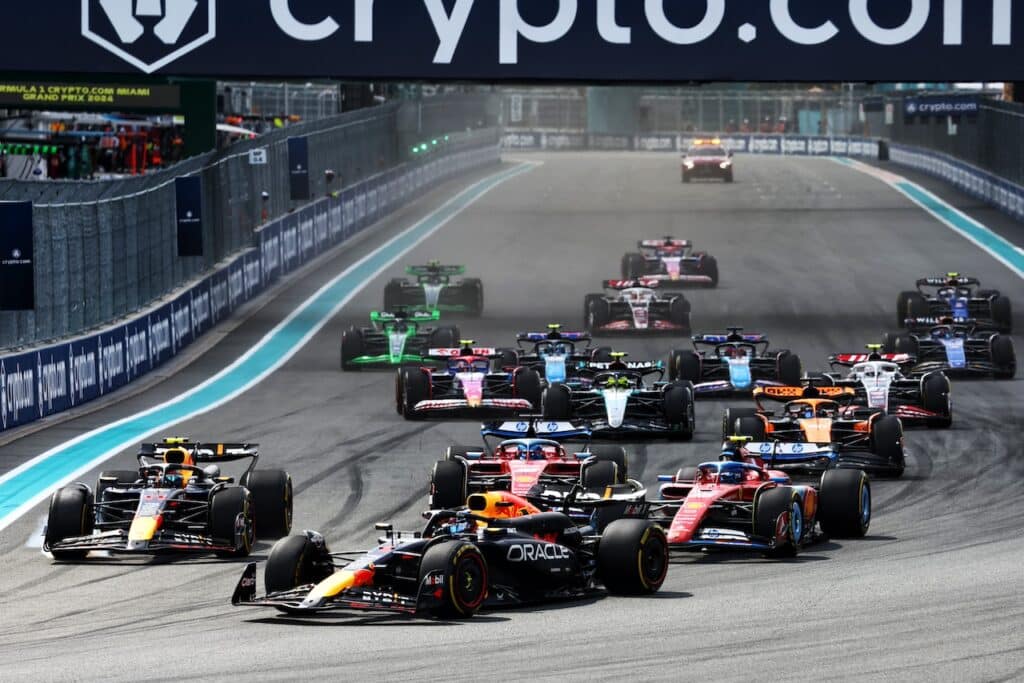F1 | Azerbaijan GP: analysis of qualifying
Charles Leclerc managed to secure his second consecutive pole position after that of Monte Carlo
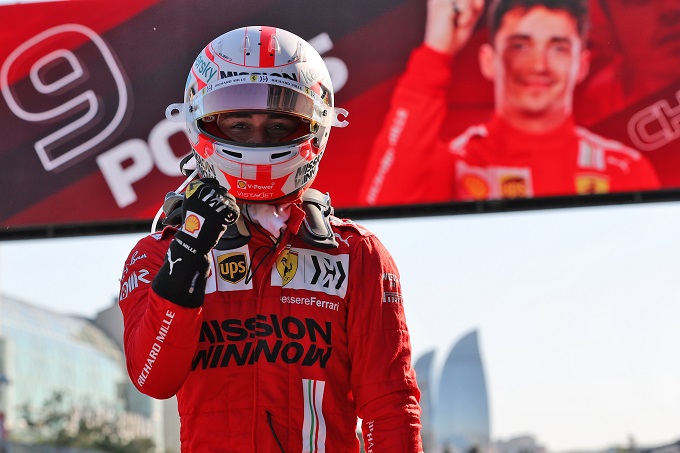
Whether they are the streets of Monte Carlo or those of Baku, the common denominator is Charles Leclerc. After having conquered pole position in the Principality, in fact, the Monegasque from Ferrari also repeated himself in Azerbaijan, thus achieving his second consecutive start from the pole to the delight of the Ferrari fans. An opportunity to be exploited, even if it won't be easy to convert today's performance into a victory, given that the drivers behind them seem to have the potential to annoy the SF21 in the race: “I'm really happy! I tried to work with the philosophy of small steps, pushing only in Q3 and I would say that things went in the best way! I had some good reference points: I knew exactly where I could earn and push harder and that's exactly what I did. After my first attempt I was quite satisfied even though I had left something in turns 4-5-6. In my second flying lap I was improving significantly, but then the session was interrupted by the red flag. However, the pole has arrived, and I'm very happy!”, said the young talent in interviews. In fact, Lewis Hamilton will start from second place, good at exploiting the situations that were in his favor to achieve a result which, after yesterday, did not seem at all obvious, given the difficulties of the W12 in getting the tires up to temperature. tyres. Also helping in this sense was in-depth fine-tuning work, which allowed us to take an important step forward: it will be interesting to understand if and how this will influence the behavior of the German single-seater over the long distance which, to tell the truth, during in free practice it performed well, bringing itself to the level of its most trusted rivals, demonstrating that, once the warm-up phase was concluded, the car had potential to express. Set-up choices that saw the drivers take different paths, with the Briton opting for a more aggressive solution, which should guarantee him an advantage in managing the coverings, unlike his teammate, Valtteri Bottas, who confirmed the weaker solution that had been tested during the last test session on Saturday morning.
Opening the second row will be Max Verstappen, who once again saw the opportunity to improve slip away at the end due to a red flag due to the accidents of Yuki Tsunoda and Carlos Sainz, which put an early end to the session . The Dutchman was understandably disappointed at not having had the opportunity to compete in the last attempt, but confident that tomorrow he will have the chance to redeem himself in the race by being able to count on a vehicle that seems to have what it takes to aim for success stage: “They were stupid qualifications. In any case, it went the way it went, third place, we have a good car. Everything was going well, but all this crap happens every time in Q3. These things happen. Our car is strong, tomorrow we hope to manage the tires and score some good points,” Max then declared. Alongside him will be Pierre Gasly, capable of achieving an excellent fourth place by making the best possible use of the strategy planned by the team in Q3, thanks to the contribution of his teammate who had provided him with the slipstream during the timed lap. On a track full of stretches it was reasonable to expect an AlphaTauri back in form, thanks to the characteristics of the car which match well with those of the Baku track and, beyond today's weather, the overall performance over the weekend so far has reflected those were the predictions, even if it will be very important to be able to repeat it in the race, where the help offered by the mobile wing could mitigate the advantage on the straights that the AT02 has shown several times during this season: “Honestly, it was a truly incredible day. After finishing FP3 ahead of everyone, I was thrilled for qualifying. We clearly had the pace and were strong, we pushed all weekend and I was comfortable with the car here in Baku. I'm really happy with our performance in qualifying, I think we could have fought for the top positions in the end, but fourth place is great and the gap to the front row was really small. The whole team did a fantastic job and we can be really proud of the progress we are making", commented the Frenchman at the end of qualifying, visibly satisfied with the fourth place achieved. The third row will be made up of Carlos Sainz and Sergio Perez, with the former not hiding his regrets in interviews. In fact, before the red flag was shown, the Spaniard had managed to lower his times in all the microsectors he completed, also being able to benefit from the slipstream offered by Yuki Tsunoda, who would then hit the wall at turn three after a braking to the limit: the Ferrari driver himself had also paid the price as he, distracted by the Japanese blocking, then lost control of the car and ended up spinning himself: “Today was another frustrating qualifying. I am very disappointed that I was not able to realize the full potential of the car, once again due to very unfavorable circumstances. I was improving my time on the last attempt in Q3 when the AlphaTauri in front of me crashed. I saw the smoke from the wheel lock but hoped he would be able to continue. When I saw that this wasn't the case, it was too late, and I ended up against the barriers too. At that speed the damage could have been worse, but the car seems fine. Looking on the positive side, I would say that today we had a good pace, certainly better than what we expected", then explained the driver from Madrid, who in free practice had nevertheless shown that he could fight for the leading positions. Sergio Perez will line up on the sixth spot, promoted by one position following Lando Norris' penalty for not respecting the procedures during the red flag: a small note of color for the Mexican on a day in which he clearly expected more considering the As the weekend went, he had to demonstrate that he could compete for a place in the front rows. However, a lock-up in turn four on the first attempt and having to slipstream his teammate compromised his performance, causing him to slide down to the third row.
Seventh place on the grid for Yuki Tsunoda, despite himself being a protagonist for better or for worse. For the better because, after an uphill start, the young Japanese finally managed to gain access to the last qualifying heat for the first time in the season, making the most of the car's potential. Badly because in an attempt to improve in the last run, the AlphaTauri talent was involved in a lock-up in turn three, due to which he was unable to do anything to avoid contact with the barriers, causing the flag to be displayed red and the early end of the session, which had deprived several drivers of the opportunity to improve. Among these there are undoubtedly Fernando Alonso and Fernando Alonso, with the former proving to be very critical of the behavior of his colleagues, underlining how the numerous interruptions during the entire qualifying period had penalized him by breaking the rhythm and depriving him of the chance to complete some laps with fresh tyres. Similar story also for Valtteri Bottas who, in the first attempt of Q3, focusing on a strategy that involved a double preparation lap to be able to bring the tires up to temperature, found himself without a trail, an element that had clearly penalized him in chronometric terms , especially considering that in that phase he had also been at the service of his teammate, towing him on the long straights. When approaching the second run, the Finn was able to position himself behind Leclerc, ready to exploit the favorable aerodynamic effect that he had not been able to benefit from a few minutes earlier: when the first sector was detected, the improvement was evident, so much so that he almost managed to equal the record split time of the Ferrari driver who was right in front of him. However, the red flag interrupted the Mercedes driver's dreams of glory, relegating him to tenth position on the starting grid. It's difficult to say where Valtteri would have positioned himself with a clean lap, but clearly we would have seen him move up the rankings by at least a few positions. Regardless of the result, the representative of the German team did not however hide the difficulties, speaking of a feeling on the flying lap that was far from ideal: "My pace wasn't exceptional throughout the weekend and I feel that in the end there is it's something wrong, because I'm at the limit but the times aren't – if I push harder, I'm in the wall. Generally we alternate in the team and this weekend it was up to Lewis to decide who comes out of the garage first, so obviously in the first heat of Q3 he had my slipstream and in the second attempt I tried to get towed by Charles but there was the red flag that flew me around. Tomorrow will be a challenge, but I know that anything can happen in this race: a few years ago I was lapped and then I returned to the front in the top positions. So you never know and for sure we will keep trying and I will try to understand everything I can tonight and fight tomorrow,” Bottas then explained. Lando Norris was inserted between the two, who had originally classified himself in sixth position, but was then awarded three penalty positions due to an infringement committed during the first heat, when in the moments following the red flag he was not immediately returned to the pits as required by the regulations, but instead remained on the track after a misunderstanding with his wall.
The one who missed out on Q3 by a few thousandths was Sebastian Vettel, eliminated by less than three hundredths of a second in the direct comparison with Fernando Alonso. Undoubtedly what made the difference was above all the display of the red flag at the end of the second heat which had deprived the German of the opportunity to make a further attempt in which he would, without a doubt, have been able to lower his time not only by having a slipstream, which he had not been able to benefit from in the first run, but also avoiding a lock-up in turn fifteen which most likely contributed in part to flattening the tyre. From this point of view, not having the opportunity to complete the second run, having the opportunity to start outside the top ten leaves a double advantage: not only to avoid using that flat set in the early stages of the race, for which most likely the replacement of the right front tire would have been required by exchanging it with another set, but above all the chance to decide which tires to start the race with. It is precisely around this point that much of the race will play out, because from a strategic point of view Pirelli suggests using the harder compound, which very few had tested during free practice. Among these was the German from Aston Martin, who had the opportunity to exploit it during the race simulations to understand its behavior and obtain useful data for the race. Although temperatures are expected to drop on Sunday, if the hard compound proves to be as effective as it was on Friday, the four-time world champion could take advantage of it and get back into the points: “Today we had a good pace. I had been patient and waited to mark the time at the right moment. Unfortunately, I took some risks on my best lap in Q2 and locked up at Turn 15. I was lucky to continue, despite a big flatspot, which probably cost me about four tenths. This is what cost me a place in Q3. It's a difficult curve, downhill and full of bumps, where the wind blows. I'm disappointed because we easily had the pace to get through to Q3. But I think we can improve in the race with a good pace,” Vettel declared at the end of qualifying, confident in the potential shown on Friday. Twelfth position is not a bad starting point, but Esteban Ocon clearly did not hide his disappointment at not being able to get into Q3 like his teammate: in the first attempt, in fact, at turn three the The Frenchman had, in spite of himself, been the protagonist of a slight oversteer on exit, which had led him to touch the outside wall with the right rear tyre, losing something in terms of timing.
In an attempt to lower his own, also taking advantage of George Russell's slipstream, the Australian made a mistake when braking at turn three, blocking the left front tire without the chance of being able to recover the car before the impact with the barriers. Beyond the damage caused to their opponents, this is undoubtedly a wasted opportunity for the talent of McLaren, who is still trying to find that something extra that will help him find the consistency and performances that until now in this new adventure of hers they only rarely saw each other: “Obviously it's not the way I wanted to end the session. This track can certainly hurt, and it did. Crashing is never a good feeling and I feel sorry for the team who will now have to work to repair the car, but that's what happens when you try to find the limit on a street circuit, and from today we can still take some positives . We've made a good step towards getting more out of the car and understanding it, but it's still proving difficult to put it all together. We will continue to work and tomorrow will be a long race", explained the number 3. Finishing the seventh row will be Kimi Raikkonen, who despite himself was the protagonist of a rather curious fact: in the first attempt of Q1, in fact, the Finn had been involved in a big blockage in turn 15, which had led to a flat tire. As it was vital to get through, the team had clearly decided to fit a second set of new soft tyres, but Lance Stroll's mistake, which had caused the second red flag of the session after the one caused by Antonio Giovinazzi, had not given opportunity for Kimi to complete his fastest lap, thus leaving him without time. With still a few minutes left on the clock, the only opportunity was to gain access to Q2 by fitting an additional set of soft tyres, thanks to which he had managed to overcome the trap. Those continuous interruptions, however, had left him without new trains for the second heat, thus having to be content with running only with used tyres: considering that Ricciardo had only finished a few thousandths ahead, it goes without saying that he didn't have the opportunity to doing at least one lap with fresh tires penalized the Finn, who would have had the chance to gain at least another position on the starting grid. Behind him will be George Russell, capable once again of taking his Williams to Q2, the right reward for his mechanics who had to work quickly to replace the Power Unit following a leak during the third free practice session . Concluding the starting grid will be Nicholas Latifi, Mick Schumacher, Nikita Mazepin, Lance Stroll and Antonio Giovinazzi, with the last two protagonists of two accidents in turn 15 during the first heat.
The Leclerc-Hamilton comparison
After managing to achieve pole position in Monaco, Leclerc repeated himself in Azerbaijan, obtaining a beautiful and surprising start from the first spot on the grid. A high level performance, as one would expect from a driver who over the years has made the flying lap a real strong point, which allowed him to surprise his rivals and put himself in a useful position to achieve a good result ahead of the race, despite his rivals giving him a hard time. So how did Leclerc manage to achieve pole? And was there room for improvement?
To understand where the Monegasque managed to make the difference, it is useful to compare his lap with that of second place, Lewis Hamilton, who was about two and a half tenths behind at the finish line. First of all, it is important to underline how Ferrari and Mercedes had opted for a different approach: the Maranello team had chosen to do a single lap before launching their push lap, convinced that the warm-up phase did not represent a problem, at contrary to the Anglo-German team, which had decided to run two warm-up laps, aware of the difficulties encountered during free practice. This meant that Leclerc found himself first at the start of his lap and, therefore, was unable to have a slipstream for most of the lap, except in the last sector, where he managed to exploit the aerodynamic benefit right from Hamilton, who was about to launch. On the other hand, the Briton from Mercedes could count on the support of his teammate, who would have towed him during his fastest lap, even if, to tell the truth, the preparation had perhaps not been the best, as explained from the seven-time world champion himself: “I definitely think there was still some time to gain compared to the first attempt, I think that in the first run I was too close to Valtteri. I struggled in the central sector because I was too close to the car in front. But anyway, I'm happy to take this second position,” Lewis explained after qualifying. An element to keep in mind, because it is true that Hamilton had been able to benefit from the wake of his teammate throughout the lap, but being so close, part of what he would have gained on the sprints, he would then have lost in the more driven part , as highlighted by the comparison.
Clearly, by taking advantage of the slipstream, the Mercedes driver had managed to arrive at the turn one braking with a small advantage, but still extremely limited, given that the distance between the starting line of the lap and the braking point is extremely small, essentially making it was impossible to really make a difference in that section despite a few km/h more top speed. At the turn one, Leclerc had tried to attack the entrance, bringing more speed under braking and into the corners, which however had forced him to take a slightly wider line at the apex, thus penalizing the exit, even if this would have lost would have been mitigated by what he had previously gained. On the contrary, Hamilton had opted for a much cleaner line, remaining stuck to the inside curb, a factor that would have given him the opportunity to have to close the steering wheel less when exiting and gain traction.
Approaching the second corner, the two were essentially in the same situation, almost on par. The exit from that area, however, would have been fundamental, given the subsequent straight stretch, on which you can lose or gain significantly compared to your opponents. Compared to the previous stretch, the situation was reversed: Hamilton was incisive at the entrance, leaving the accelerator slightly late, but what made the difference was the phase of travel and the exit, where Lewis had suffered a large oversteer , thus losing grip and penalizing the subsequent reach. On the contrary, Leclerc was able to quickly get on the accelerator without seeing the rear slip, an element that would have given him the opportunity to make the most of the traction phase and mitigate what he would have lost in the comparison without a slipstream.
Taking advantage of the aerodynamic effect provided by his teammate, the Englishman from Mercedes was able to recover what he suffered at the exit and return to the braking section of turn three in a situation of slight advantage. As we had seen in turn one, however, Leclerc had managed to attack the entry in a decisive manner, while Hamilton had not managed to do the same, among other things suffering a large loss of grip at the rear which had undermined the phase of traction. This had put Leclerc back in the lead, with an advantage that would however only last a few meters: in braking for turn four, in fact, the Monegasque had slightly lost the rear, thus missing the apex and widening the trajectory, giving Hamilton the opportunity to get back to the front again before the start of the second sector, the one with the greatest dangers and where, potentially, the Englishman would have suffered from being close to his teammate.
Leclerc had managed to interpret the five-six chicane perfectly, if it hadn't been for a flaw on the exit, where a powerful countersteer had forced him to return to the brakes, thus penalizing the subsequent short sprint. The one who decided the result, however, would most likely have been the castle area and, in a certain sense, that was the case, because also due to the aerodynamic disturbance coming from Bottas' car, both in turn seven and in the uphill stretch inside of the old city, Hamilton had suffered a significant gap, which had sent him back to more than two tenths of the pace. But at what points has Leclerc managed to accumulate this advantage? To understand more about this, it is useful to observe how at the exit of turn eight there was also an important difference in lines between the two, with Leclerc having stayed closer to the outside wall to have a better entry into turn 11 and greater space for the change of direction at 12. An approach that had borne fruit, unlike that of the Englishman, more internal and probably also partly penalized by the dirty air coming from his teammate. This does not take away from the fact that the interpretation of the Monegasque was perfect and this can be appreciated above all in the change of direction and in the insertion at twelve, where not only was Leclerc able to anticipate the movement on the steering wheel, but also to guarantee himself a most effective trajectory from which to reap the benefits on the next full-strength stretch that would have led to turn fifteen.
With around two tenths of a delay, managing to get back into the lead would not have been at all easy for the Englishman. In turn 15, once again, Leclerc had proven to be extremely competitive at the entrance, while Lewis had reciprocated by recovering at the exit and in the stretch that would then lead to the last real braking section of the track, turn sixteen. What made the difference in that stretch was above all the driving phase, with the Mercedes driver's car breaking down after passing over the curb, thus forcing him to widen his trajectory and penalize his exit, ending up on the curb first and having to review the acceleration phase. An important element in the examination, because, at that point, the game was over. It is important to keep in mind, in fact, that precisely in the last sector of his lap, Leclerc had also been able to count on a wake, namely that of the Englishman, who was about to launch at the end of his second preparation lap: moreover, although extremely limited, the benefit of having Bottas in front could also have made its contribution, given the closeness between the two Mercedes standard bearers. Thanks to the less than perfect exit from turn 16, the slipstream provided to Leclerc and a more loaded rear wing than that of his Ferrari rival, it is easy to understand why, despite the important help offered by his teammate on the final sprint , Hamilton was then unable to regain the lead despite an engine advantage that still remains today.
From this point of view, it would have been very interesting to observe the evolution of the second attempt, where Leclerc had managed to lower his best time by more than a tenth in the first sector but, unfortunately, the red flag deprived us of the opportunity to witness a Close final fight, with Hamilton and Verstappen who would undoubtedly have been in the game.
The strategies
From a strategic point of view, Pirelli suggests a one-stop tactic, with the use of the hard tire in the second half of the race. With a track that favors overtaking, we could see different strategies even in the simple duration of the stints, without forgetting that it will be essential to keep in mind that, given the long straight, even having an advantage of three or four seconds can give the benefit to the pilot behind him to recover something and get closer. There will be two fundamental elements: understanding the durability of the soft and seeing how the harder compound will react in today's conditions, especially considering that on Friday the feedback was positive.
if you want to always be updated on our news
Follow us here










